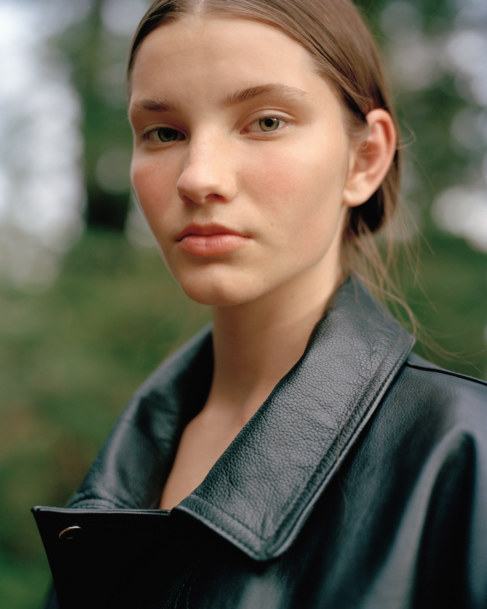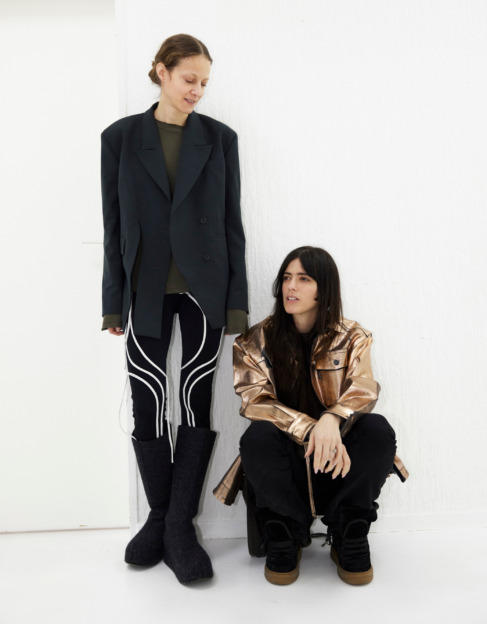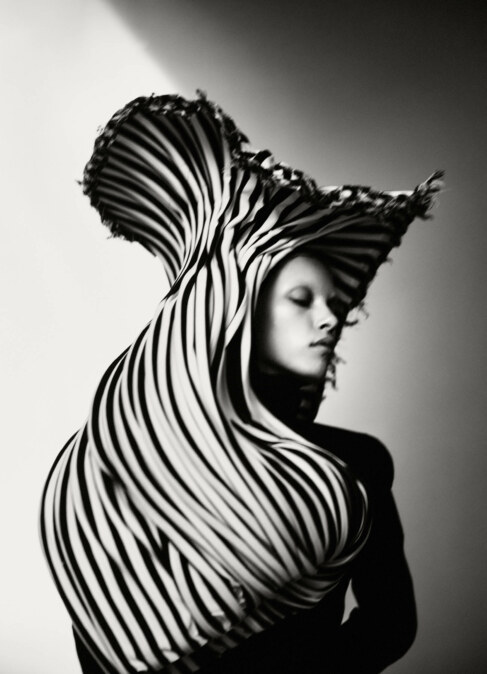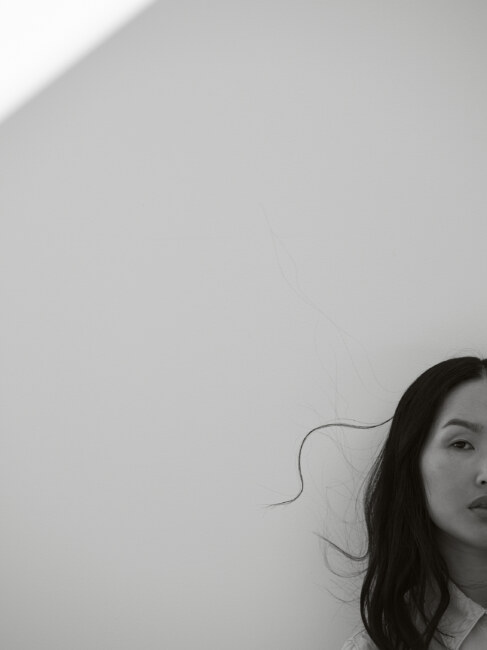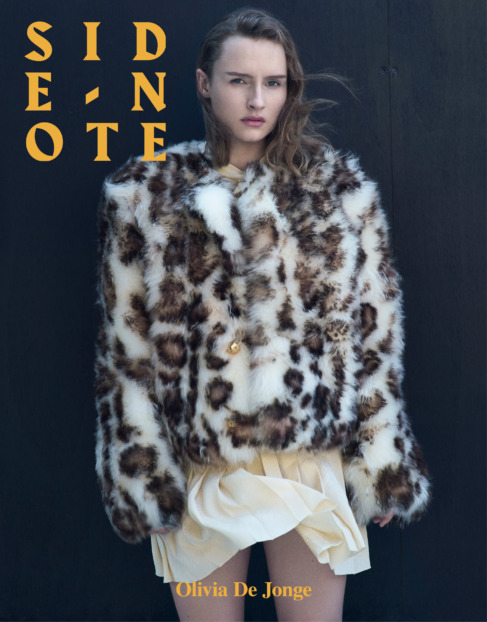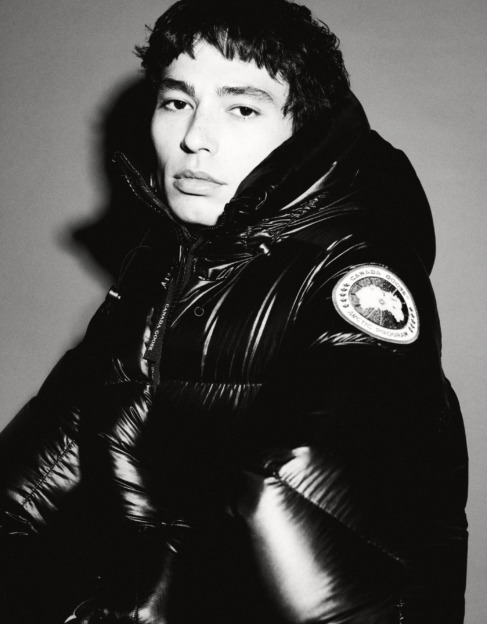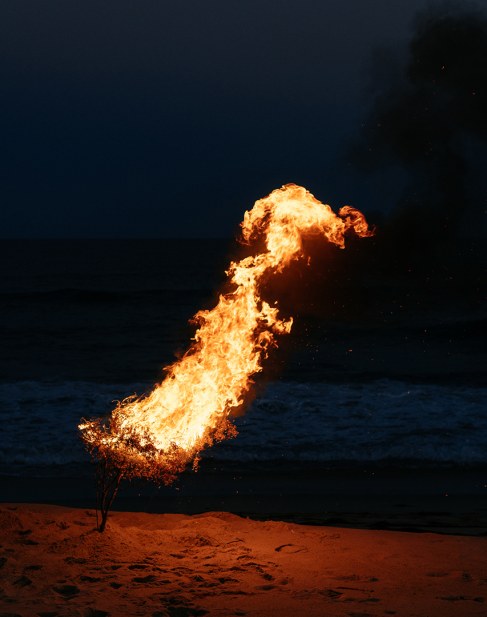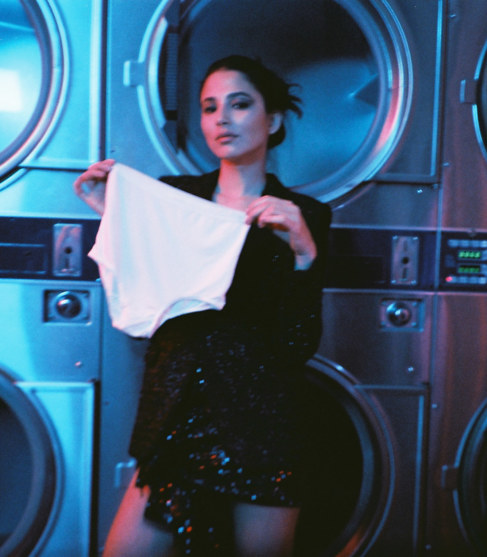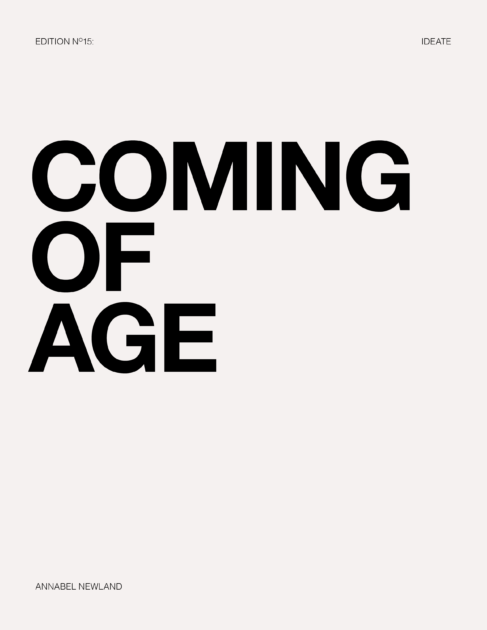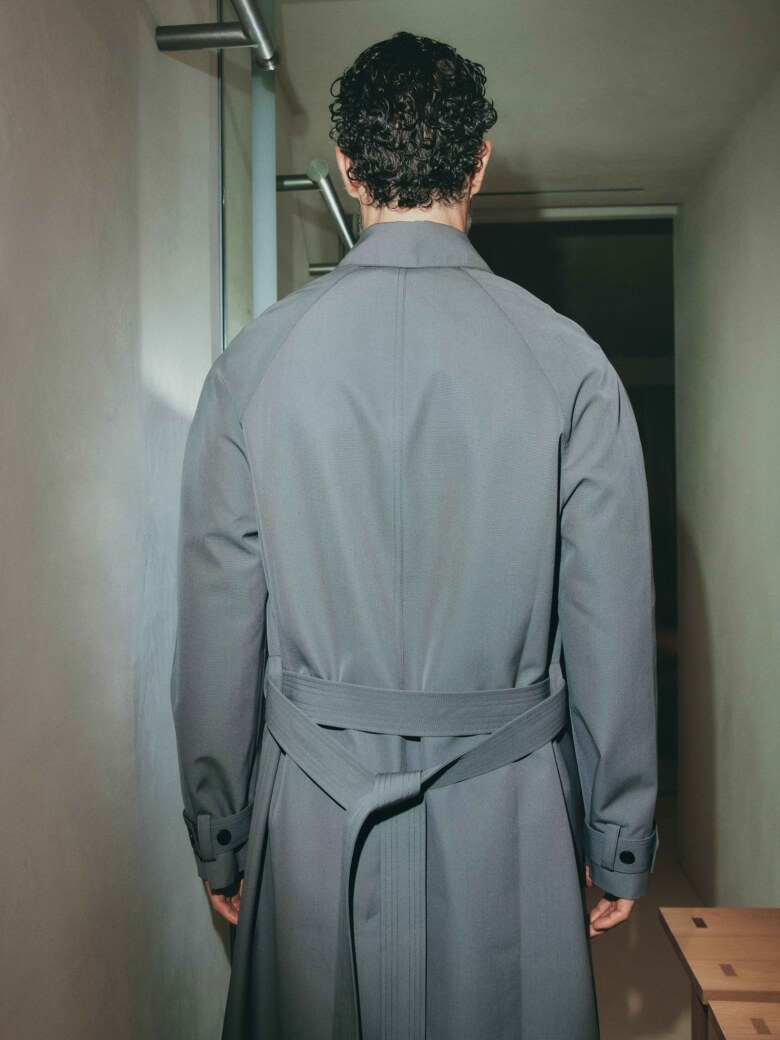
Venroy coat
PEOPLE OF NOTE: SEAN VENTURI – ON VENROY BY OLIVER BEGG AND DIVYA VENKATARAMAN
How do you bottle the seaside? Or capture the feeling of it in the fabric of a linen vest? It’s the rush of the wind in your hair, the salty, sticky sea breeze slapping your cheeks, the elemental nature of being on the edge of land and water. For Venroy, that feeling is a universal one. The ocean that its pieces speak to goes beyond the brand’s homeland — the cliffs of Bondi in Sydney’s east — and across continents. Venroy is inspired by a multiplicity of shores: the hot white sand of Bondi, the salty Atlantic in Montauk, the island breezes of Capri and the lemony-scented air of Sicily. In a way, bringing the feeling of being in those starkly different places into one brand, one aesthetic, is what the Sydney-based label has been doing for its whole existence — in different forms and different products, but with a singular vision.
It may not be surprising, then, that Sean Venturi, its founder and managing director, grew up in Bondi — a mythical idyll in the minds of many around the world, a place they identify as the physical manifestation of ‘escape’. The seaside Sydney suburb provided ample inspiration for the holiday state of mind upon which Venroy was built.
Venturi and his friend Theo Smallbone launched the company in 2011 with a small suite of men’s boardshorts. (Smallbone has since left the company.) Together, the pair de- cided to cut their range to a European length — a few inches shorter than the style that was ubiquitous in Australia and the United States at the time, which hit below the knee. “We used to go down and swim at Flat Rock pretty much every afternoon, and that’s where the idea came from,” Venturi says. Boardshorts were something of a fascination for them: they collected them wherever they went on holiday and would scour online sites to find pairs they liked.
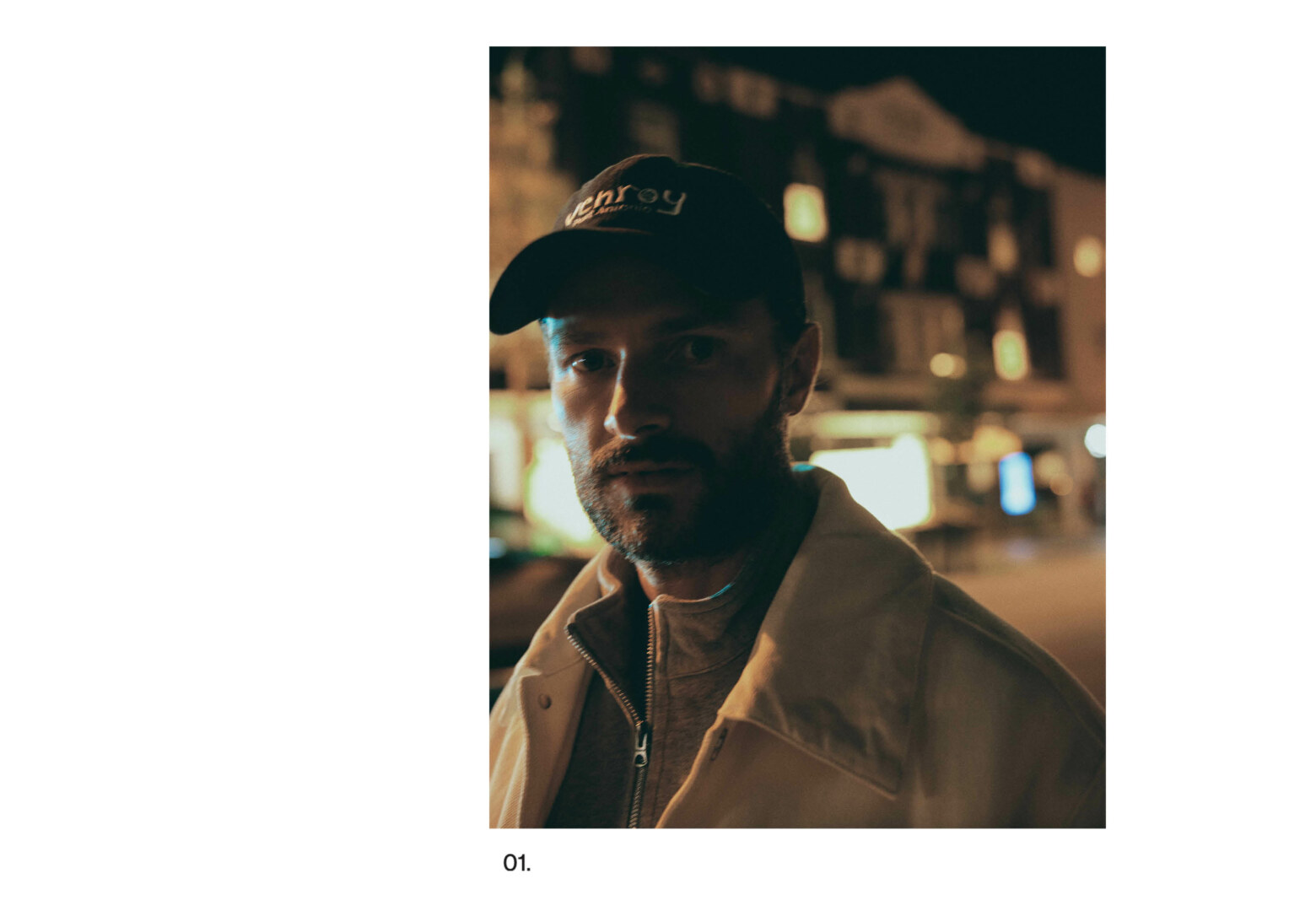
Venroy hat, jacket and turtleneck
Soon after the launch of Venroy in Australia, Venturi moved to the US to capitalise on the attention the brand was getting, and to grow it in the American market. Within six months, Venroy was available in prominent US retailers and stocked in renowned boutiques such as Nordstrom and Barneys.
But this didn’t align with Smallbone and Venturi’s vision for the brand. The first time they saw a customer buying boardshorts was from across the road through a department store window. Venturi realised he didn’t want to be so separate from the customer experience. He wanted to be involved in the nitty gritty.
So, in 2015, the brand removed its product from international and wholesale retailers, effectively allowing one exclusive entry point that they could steer. “The idea of opening our own store was really about trying to create an experience that we were able to control,” Venturi says. They also wanted to transform the brand from a boardshorts label into “a full leisurewear offering” and focus on the linen that would come to make them known as a premium leisure label. “When we introduced that into 2015, there wasn’t much linen available,” he says. “Now, obviously, it’s everywhere.”
It was only in 2017 that the brand added womenswear. With a full range of men’s and women’s clothes, as well as its own stores, Venroy was able to more wholly distil the sensory experience of being on holiday — its liberation and possibility — through the medium of not just clothing but architectural design and art, too.
Curiously, for a clothing brand founder, Venturi was not always “into fashion”. He studied business at university, and the idea of creating Venroy wasn’t about fulfilling a lifelong dream of designing clothes. “I don’t personally have that many ties to the fashion world,” he explains. “But I was really into swim shorts for some reason. It’s a funny little category. Guys who are not into fashion will still be into hoodies and boardies.”
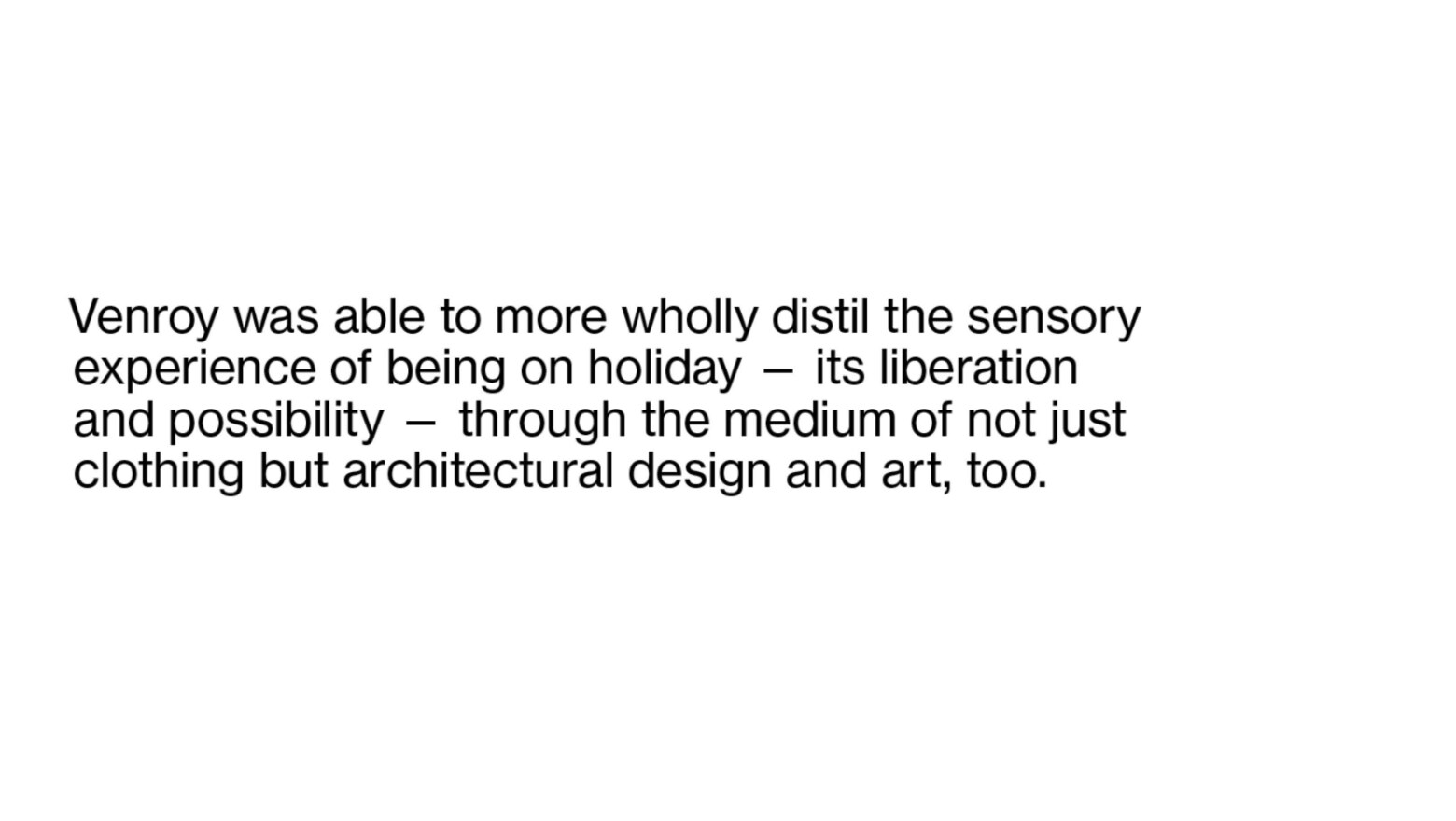
It’s this customer the brand has courted: one who is not necessarily a ‘fashion person’ but who respects style and demands substance. Venroy’s foundation is simple classicism and clean silhouettes. Venturi estimates that 80 per cent of the brand’s inventory is in linen pieces, while the rest is made up of cashmere, silk, wool and cotton. In the years since Venory launched, linen has become a ubiquitous aspect of the Australian fashion landscape, filtering from boutique makers all the way to fast-fashion brands. What does the current phase of linen mania mean for Venroy, a brand that built its following on the classic holiday fabric?
“We’ve really expanded on it,” Venturi says. “If we stayed with the basic women’s styles we started with, we would be in trouble now. But because we’re really inspired by destinations — and we go to that destination before we design, and we shoot there — it works.” That level of specificity is what has set Venroy apart in the past and what might just continue to do so. Most recently, the brand has shot and designed collections in Jamaica’s Montego Bay, the Italian island of Ischia and Mexico City.
The brand has also moved away from staples to embrace more seasonally specific styles. “We buy our seasonal product really shallow,” he explains. “For example, we’ll make 60 of a specific item, or even sometimes 30.” This is particularly true for womenswear, where the seasonal styles make up 70 per cent of each drop. (Venroy works on a schedule of five collections a year, spread across 10 drops). “People come to us now [for seasonal styles]. I think that’s what has led to us moving on from just being quite a basic women’s brand,” Venturi says. Contrastingly, for menswear, the seasonal styles make up 50 per cent of each drop, and the rest is the core collection.
Adding womenswear was a natural move for Venturi. Even in the early days when Venroy was a menswear brand, about 40 per cent of its store traffic was women. They would shop for their boyfriends, dads and brothers. “So we had an existing audience when we launched womenswear,” Venturi says. “It was a natural progression.”
That’s not to say there haven’t been logistical challenges. “I think menswear is — I don’t want to say easier, but there’s a lot less consideration in terms of fit. With womenswear, there are so many kinds of fits, so many ways of wearing garments.”
Like the brand it inspired, Bondi has also changed a lot in the past decade — even since Venturi’s childhood in the ’90s. “ It had a very different energy than it does now,” he says. “[Back then], all the kids we knew in the neighbourhood would be out skating, surfing, wearing those classic Australian beach culture brands — Roxy, Billabong. We really had such a strong identity connected to how we dressed, and that kind of really disappeared. I would say, probably, with the launch of social media, that’s all changed.” Now more than ever, Venturi believes, brands need to carve out a very clear message.
Now, Venroy is accessible only through its website and its stores, of which there are four in Australia and two internationally. There is no potential for Venroy’s product and its message to be distilled by any department store or boutique. Is that why the brand has such a specific, defined quality to it? Why walking into a store in Paddington or Montauk signals something both local and foreign, both deeply Australian and evocative of foreign shores, all at once? “The world doesn’t need another fashion brand,” Venturi says. “You have to think, What makes this important? What is the story I’m trying to tell? What do you stand for? If there’s no purpose that’s coherent, it’s irrelevant, I think.
“We’re seeing that fatigue right now, too.” He references Farfetch and Matchesfashion.com, both huge online retailers that were acquired at significant losses late last year. “What everyone’s realising is that the Amazon model — it’s not transferable to fashion. There’s a limit on how much luxury product can sell online. The promotional cycle is just so easy and short-sighted. It focuses on sugar hit after sugar hit.”
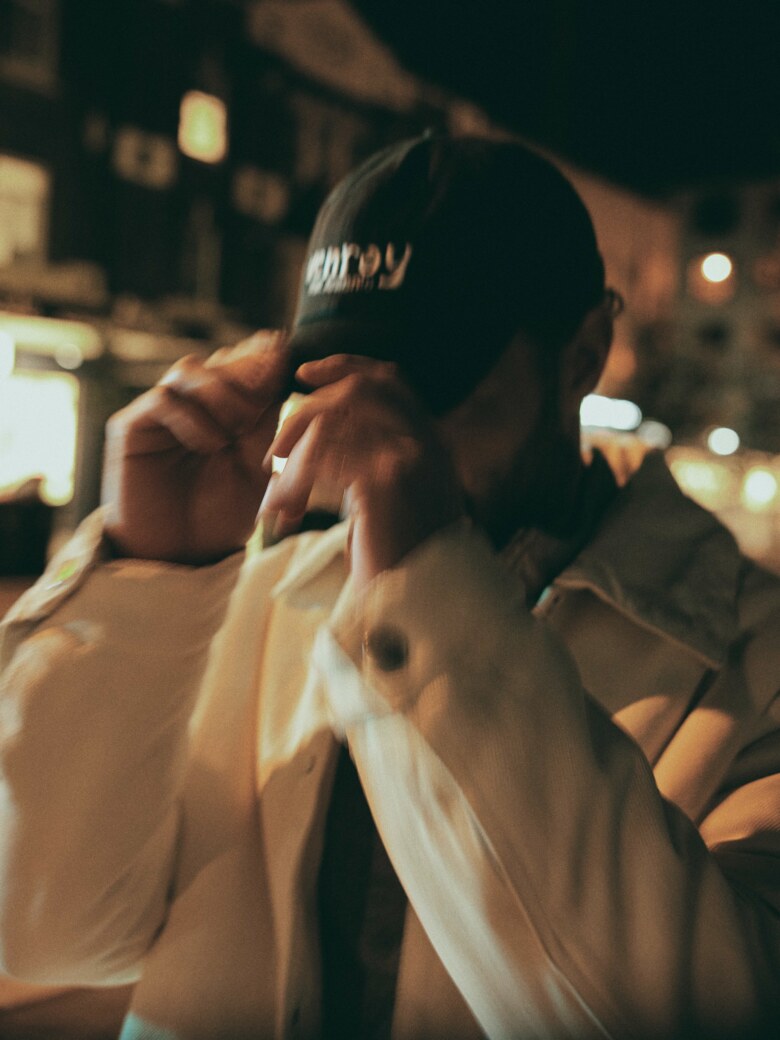
Venroy hat, jacket and turtleneck
Venroy is very careful about sales. In 2023, the store was open on Boxing Day for the first time in many years, but there were no discounts. In 2020, Venroy had its first sale in five years. “I know that I’d have a much bigger business if I did a faster rollout and if we weren’t as considered as we are,” Venturi says. “But it’s a choice.”
Perhaps it’s the fact that he doesn’t consider himself a ‘fashion person’ or because of his global perspective, but Venturi has a clear vision of what makes Venroy, well, Venroy. The recent release of the brand’s first fragrance, Le Paradiso, de- signed with Barnabé Fillion, the renowned French nose behind fragrances for Rick Owens and Le Labo, contributes to the complex and multi-layered world of Venroy. It is another build- ing block — along with the clothing, the interiors by in-house architect Sarah L’Anson, and the scent in the stores — in the subtly controlled and purposeful way that the brand tells a story. With Le Paradiso, sensory activation was key. Venturi want- ed to look into the intersections of memory and travel. “The ability for scent to trigger memory and feeling is really strong, powerful,” he says. “I wanted the fragrance to be able to cap- ture the moments of nostalgia you have after a holiday, the ones that take you back to that moment. The moments that you re- member, when you’re looking back, as even better than they were.” From scent to fashion and beyond, Venroy is living proof that slow, focused and steady might just win the race.
_________
SIDE-NOTE acknowledges the Eora people as the traditional custodians of the land on which this project was produced. We pay our respects to Elders past and present. We extend that respect to Aboriginal and Torres Strait Islander peoples reading this.

